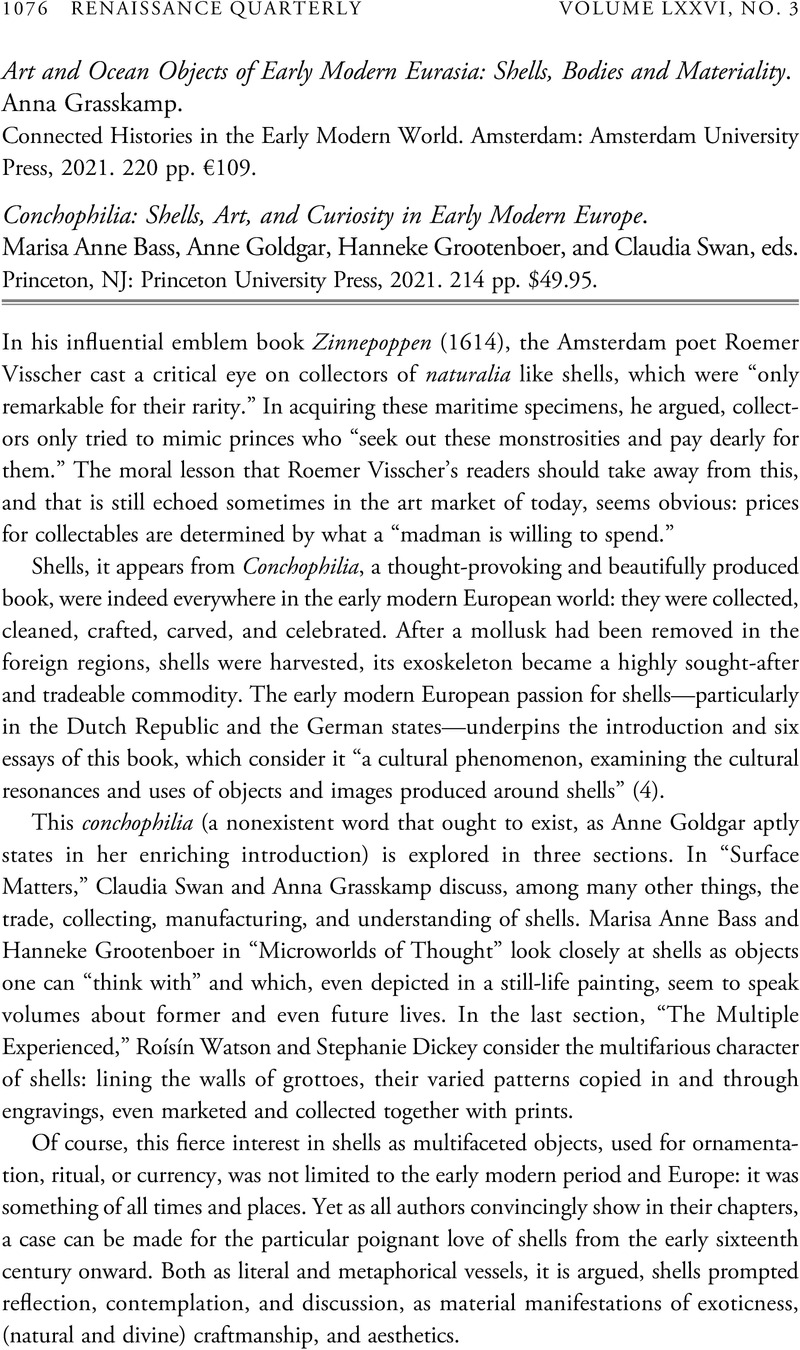No CrossRef data available.
Article contents
Art and Ocean Objects of Early Modern Eurasia: Shells, Bodies and Materiality. Anna Grasskamp. Connected Histories in the Early Modern World. Amsterdam: Amsterdam University Press, 2021. 220 pp. €109. - Conchophilia: Shells, Art, and Curiosity in Early Modern Europe. Marisa Anne Bass, Anne Goldgar, Hanneke Grootenboer, and Claudia Swan, eds. Princeton, NJ: Princeton University Press, 2021. 214 pp. $49.95.
Review products
Art and Ocean Objects of Early Modern Eurasia: Shells, Bodies and Materiality. Anna Grasskamp. Connected Histories in the Early Modern World. Amsterdam: Amsterdam University Press, 2021. 220 pp. €109.
Conchophilia: Shells, Art, and Curiosity in Early Modern Europe. Marisa Anne Bass, Anne Goldgar, Hanneke Grootenboer, and Claudia Swan, eds. Princeton, NJ: Princeton University Press, 2021. 214 pp. $49.95.
Published online by Cambridge University Press: 15 November 2023
Abstract
An abstract is not available for this content so a preview has been provided. Please use the Get access link above for information on how to access this content.

- Type
- Review
- Information
- Copyright
- Copyright © The Author(s), 2023. Published by the Renaissance Society of America



